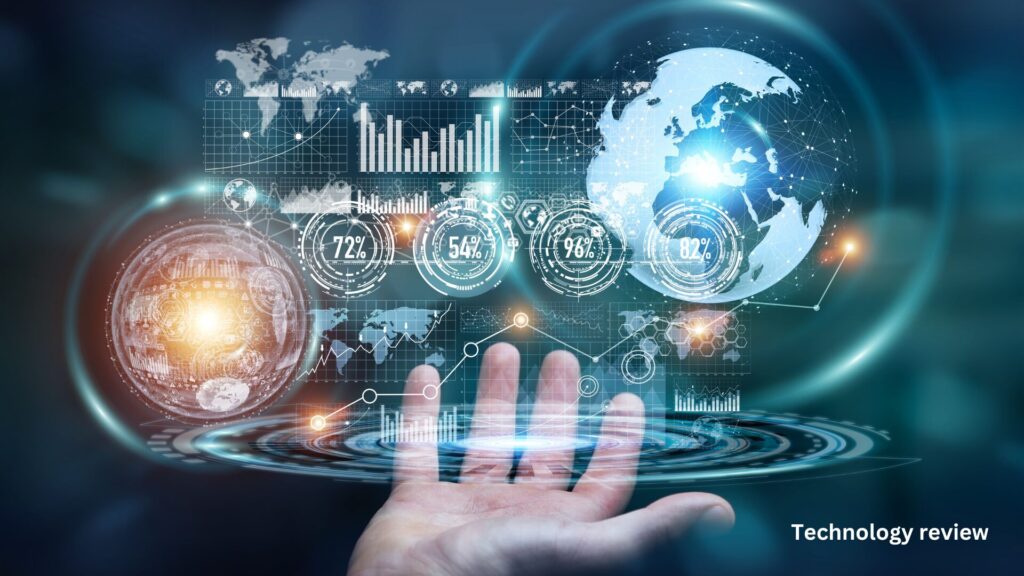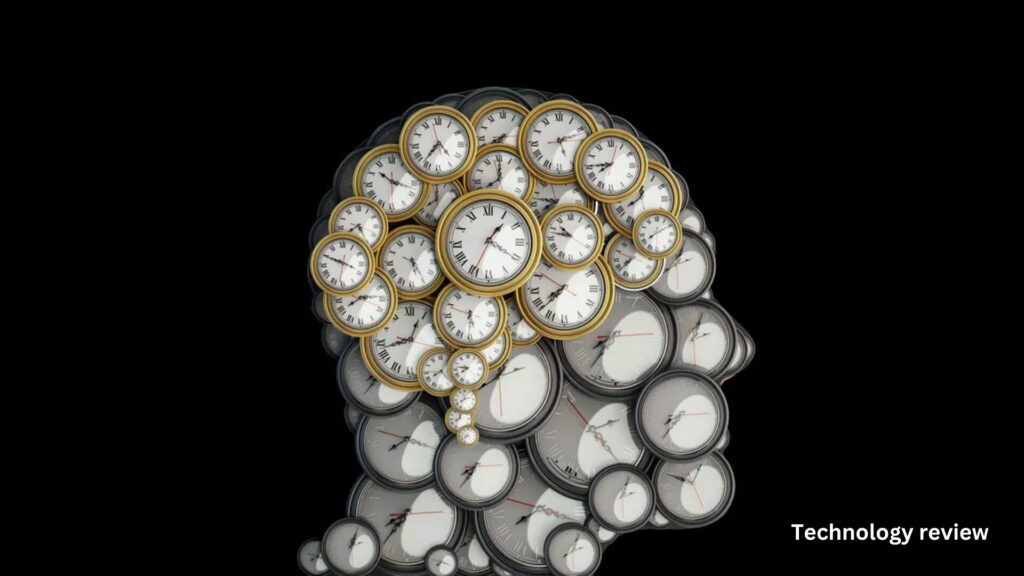Cutting-Edge Latest Tech Revealed In an era where technology evolves at a breakneck speed, staying updated with the latest tech advancements is crucial for individuals and businesses alike. From the realms of artificial intelligence to groundbreaking strides in biotechnology, these innovations are reshaping our world. This blog post delves into some of the most cutting-edge technological developments, offering a glimpse into what the future holds.
Advances in Artificial Intelligence and Machine Learning
Artificial intelligence (AI) and machine learning (ML) have come a long way and continue to make significant strides. In 2023, AI reached a pivotal moment as generative AI (GenAI) began transforming business models and revolutionizing work processes. This shift in AI technology has allowed businesses to innovate more efficiently, changing the landscape of various industries. From automating mundane tasks to providing sophisticated data analysis, AI and ML are indispensable tools in modern industry.
The use of AI is also extending into more creative fields. Artists, musicians, and writers are collaborating with AI to create works that were once thought impossible. This fusion of creativity and technology promises to unlock new realms of artistic expression and redefine our understanding of creativity itself.
The Rise of Quantum Computing
Quantum computing stands poised to redefine the tech landscape by leveraging qubits to perform complex calculations at unprecedented speeds. Unlike traditional computers, which use bits to process information sequentially, quantum computers can analyze multiple possibilities simultaneously. This capability holds promise for industries reliant on heavy data processing, such as finance, pharmaceuticals, and logistics.
Recent advancements have seen significant investments from both private companies and governments aiming to accelerate the development of quantum technology. These investments are fueling research that could lead to breakthroughs in cryptographic code-breaking, optimization problems, and molecular simulations for drug discovery.
Though still in its nascent stages, the potential applications of quantum computing are vast. From enhancing artificial intelligence algorithms to solving logistical challenges, the impact of this technology is far-reaching. The next few years will be critical as researchers and engineers work to overcome current limitations and bring practical quantum computing solutions to market.
Innovations in Consumer Electronics
The consumer electronics landscape is rapidly evolving, driven by a surge in demand for more interconnected and intelligent devices. AI and IoT are revolutionizing smart devices, allowing for unprecedented levels of personalization and efficiency. This technological synergy enables seamless communication among gadgets, forming an integrated digital ecosystem that significantly enhances convenience and user experience.
Smart homes, equipped with AI-driven systems, can now anticipate and respond to the needs of their inhabitants, adjusting lighting, climate control, and security measures autonomously. Wearable technology has also seen tremendous growth, providing real-time health and fitness data that empowers users to take proactive steps towards wellness.
In addition to home and personal devices, advancements in consumer electronics are evident in the entertainment sector. Ultra-high-definition displays, immersive sound systems, and augmented reality features are transforming how we experience media and games. As these innovations continue to mature, the boundary between the digital and physical worlds will blur, creating new possibilities for interaction and engagement.
Progress in Renewable Energy Technologies
Renewable energy technologies are undergoing a period of rapid innovation, driven by the urgent need for sustainable solutions. Cutting-edge advancements in solar panel efficiency, wind turbine design, and energy storage systems are making renewable energy sources more viable and cost-effective. Solar panels are now being developed with higher conversion efficiencies, allowing them to capture more sunlight and generate more power from the same surface area. Similarly, wind turbines are benefiting from aerodynamic improvements and more robust materials, enabling them to produce more electricity even in lower wind conditions.
Energy storage is another critical area of development. Next-generation batteries and other storage technologies are enhancing the reliability of renewable energy by storing excess power generated during peak production times for use when production is low. This capability is crucial for balancing supply and demand and ensuring a consistent energy supply.
The global commitment to reducing carbon footprints is also spurring innovations in renewable energy infrastructure. Microgrids and smart grids are being deployed to optimize energy distribution and reduce losses. These systems can integrate various renewable sources, adapt to changing conditions in real time, and improve overall energy efficiency.
As the technology continues to advance, renewable energy is becoming increasingly accessible, setting the stage for a more sustainable and environmentally friendly energy landscape.
The Evolution of Augmented and Virtual Reality
Augmented reality (AR) and virtual reality (VR) have evolved from niche technologies to powerful tools in various industries. VR, in particular, is proving to be a cost-effective solution for upskilling and workforce collaboration. It allows companies to teach soft skills such as leadership and resilience in an engaging and interactive manner.
In the entertainment and gaming industries, AR and VR are providing immersive experiences that captivate audiences. These technologies enable users to interact with digital environments in ways that were previously unimaginable. Beyond entertainment, AR and VR are finding applications in education by creating interactive learning experiences that can enhance comprehension and retention. For example, medical students can practice surgeries in a virtual environment, gaining valuable experience without any risk.
Healthcare is also benefiting from AR and VR. Surgeons can use AR for enhanced visualization during procedures, while VR can assist in pain management and physical therapy by providing engaging, distraction-based treatments. Real estate agents use AR and VR to offer virtual tours, allowing clients to explore properties without setting foot inside.
As AR and VR technologies continue to mature, their applications will expand, further integrating these immersive experiences into our daily lives and professional practices.
Breakthroughs in Biotechnology and Healthcare
Biotechnology and healthcare are at the forefront of scientific innovation, driven by groundbreaking research and technological advancements. One of the most transformative technologies is CRISPR, a gene-editing tool that enables precise modifications to DNA, offering the potential to cure genetic disorders and enhance agricultural productivity. Additionally, the rise of personalized medicine is allowing for treatments tailored to an individual’s genetic makeup, leading to more effective and targeted therapies.
Telemedicine is revolutionizing the healthcare landscape by providing remote consultations, making medical care more accessible to people in underserved areas. This is complemented by the proliferation of wearable health devices, which offer real-time monitoring of vital signs and health metrics, empowering patients to take proactive steps in managing their health.
Advanced diagnostic tools are also making significant strides, with innovations such as liquid biopsies that detect cancer biomarkers from blood samples, enabling early detection and treatment. The integration of AI in diagnostic imaging is further improving accuracy and efficiency, assisting healthcare professionals in making better-informed decisions. Cutting-Edge Latest Tech Revealed
In the realm of pharmaceuticals, biopharmaceuticals and biosimilars are being developed to treat a range of conditions more effectively. These advancements are not only improving patient outcomes but also making treatments more affordable. The intersection of biotechnology and healthcare continues to push the boundaries of what is possible, driving progress towards better health and well-being.
The Future of Autonomous Vehicles
The development of autonomous vehicles is set to revolutionize the transportation landscape. With continuous advancements in AI and sensor technologies, self-driving cars are becoming adept at navigating complex urban environments, significantly reducing the likelihood of human error. These vehicles employ a sophisticated array of cameras, LIDAR, and radar systems to perceive their surroundings and make real-time decisions. Cutting-Edge Latest Tech Revealed
The potential benefits extend far beyond personal transport. Autonomous vehicles are expected to play a pivotal role in transforming logistics and delivery services, optimizing routes, and reducing delivery times. Public transportation systems also stand to gain, with autonomous buses and shuttles offering efficient and reliable services that could ease urban congestion. Cutting-Edge Latest Tech Revealed
The integration of autonomous vehicles into smart city infrastructure is another promising development. These vehicles can communicate with traffic signals and other vehicles to enhance road safety and traffic flow. Furthermore, the reduced need for parking spaces in urban areas could lead to more green spaces and pedestrian-friendly environments.
However, the widespread adoption of autonomous vehicles also raises regulatory, ethical, and cybersecurity challenges that need to be addressed. As technology progresses, stakeholders must work collaboratively to create frameworks that ensure the safe and ethical deployment of autonomous vehicles.
Emerging Trends in Cybersecurity
In the ever-evolving landscape of technology, cybersecurity is becoming more sophisticated to counter increasingly complex threats. One significant trend is the integration of artificial intelligence (AI) and machine learning (ML) in cybersecurity systems. These technologies enhance threat detection and response by analyzing vast amounts of data in real-time, identifying patterns, and predicting potential attacks before they happen. Another key development is the shift towards zero-trust security models, which assume that threats could come from within the network and therefore verify every access request as if it originates from an open network. The rise of edge computing also necessitates robust security measures at the network’s periphery, ensuring data integrity across decentralized systems. Additionally, as the Internet of Things (IoT) continues to expand, securing interconnected devices becomes paramount. This involves implementing stronger encryption methods and ensuring devices are updated regularly to mitigate vulnerabilities. The ongoing advancements in cybersecurity are crucial to safeguarding data and maintaining trust in a digitally interconnected world. Cutting-Edge Latest Tech Revealed



